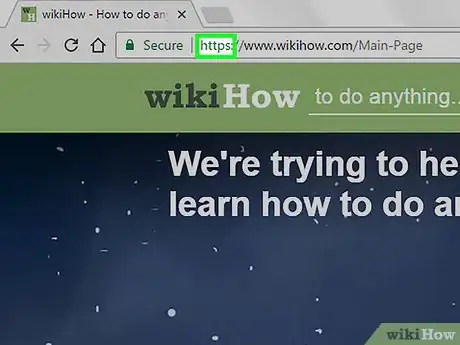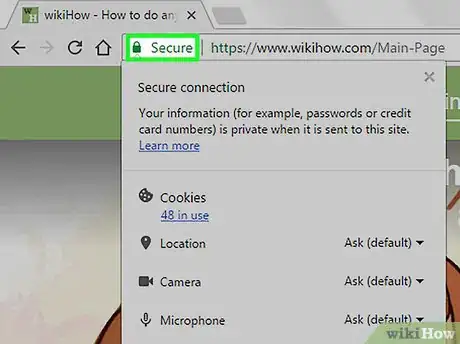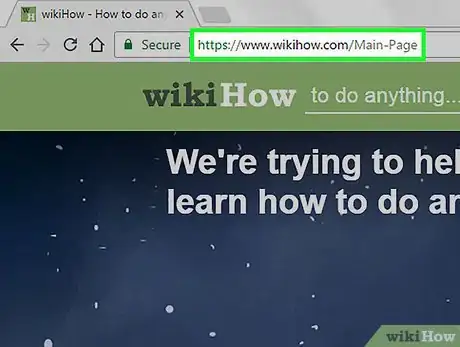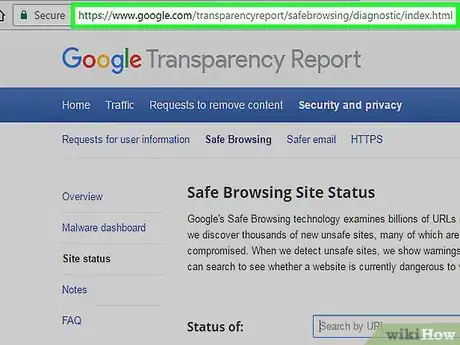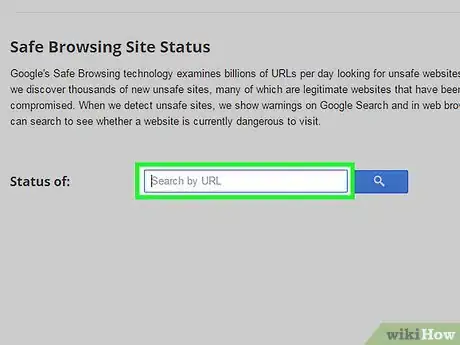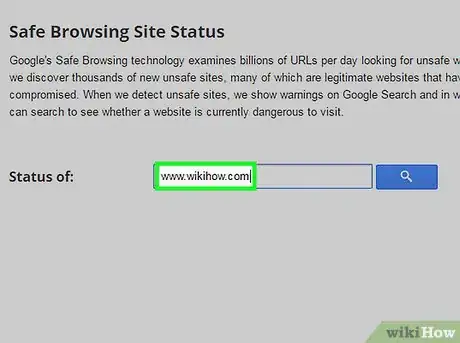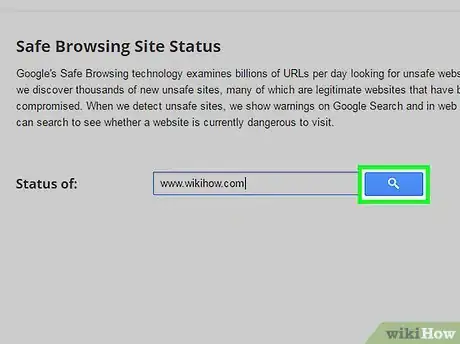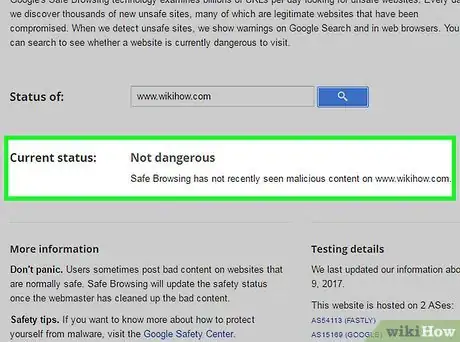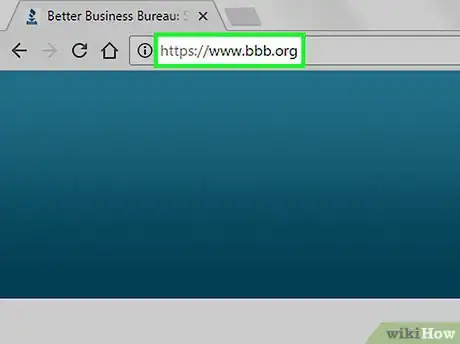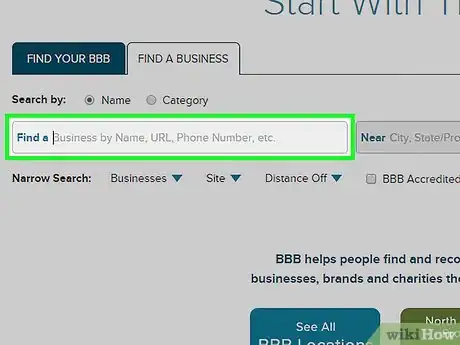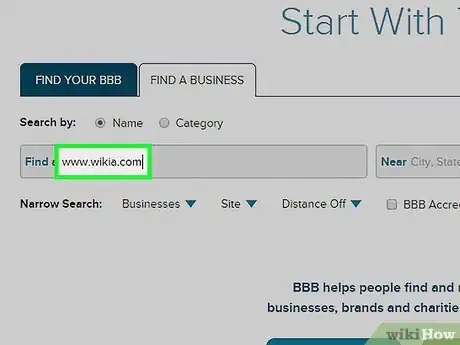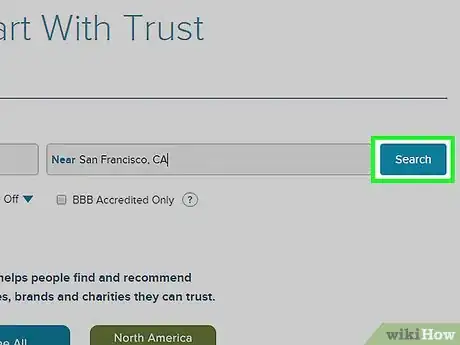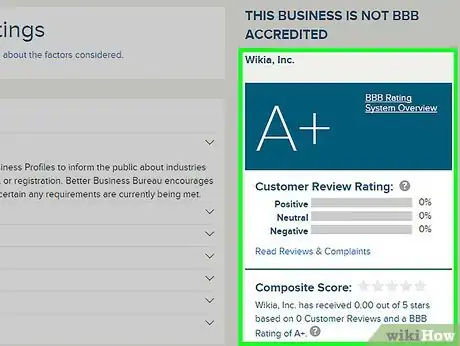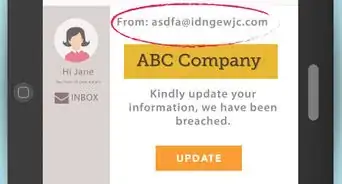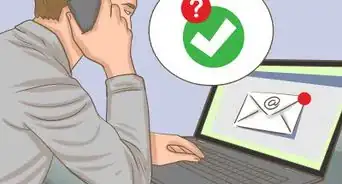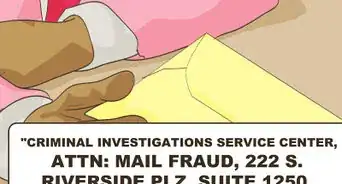This article was co-authored by wikiHow staff writer, Jack Lloyd. Jack Lloyd is a Technology Writer and Editor for wikiHow. He has over two years of experience writing and editing technology-related articles. He is technology enthusiast and an English teacher.
There are 11 references cited in this article, which can be found at the bottom of the page.
The wikiHow Tech Team also followed the article's instructions and verified that they work.
This article has been viewed 2,009,210 times.
Learn more...
Are you concerned that a website or link you're visiting might be a scam site? There are many ways to check if a website is safe and legitimate using context clues and online tools, including the Better Business Bureau website. This wikiHow article will help you verify the safety and authenticity of any website.
Steps
Using General Tips
-
1Type the website's name into a search engine and review the results. If the site in question is a hazard (or simply an overwhelmingly illegitimate site), a cursory Google check will be enough to inform you accordingly.[1]
- Google tends to compile user reviews of high-traffic sites near the top of the search results, so be sure to check these if there are any.
- Make sure you're looking at reviews and feedback from sources unaffiliated with the website.
-
2Look at the website's connection type. A website that has an "https" tag is usually more secure--and therefore more trustworthy--than a site using the more common "http" designation. This is because "https" sites' security certification is a process most illegitimate sites don't bother with.[2]
- A site that uses an "https" connection can still be unreliable, so it's best to verify the website using other means as well.
- Make sure the site's payment page in particular is an "https" page.
Advertisement -
3
-
4Evaluate the website's URL. A website's URL consists of the connection type ("http" or "https"), the domain name itself (e.g., "wikihow"), and the extension (".com", ".net", etc.). Even if you've verified that the connection is secure, be on the lookout for the following red flags:[4]
- Multiple dashes or symbols in the domain name.
- Domain names that imitate actual businesses (e.g., "Amaz0n" or "NikeOutlet").
- One-off sites that use a credible site's templates (e.g., "visihow").
- Domain extensions like ".biz" and ".info". These sites tend not to be credible.[5]
- Keep in mind as well that ".com" and ".net" sites, while not inherently unreliable, are the easiest domain extensions to obtain. As such, they don't carry the same credibility as a ".edu" (educational institute) or ".gov" (government) site.[6]
-
5Look for bad English on the site. If you notice a large number of poorly-spelled (or missing) words, generally bad grammar, or awkward phrasing, you should question the site's reliability.
- Even if the site in question is technically legitimate insofar as it isn't a scam, any inaccuracies in language will also cast doubt on the accuracy of its information, thereby making it a poor source.
-
6Watch out for invasive advertising. If your selected site has a stunningly large number of ads crowding the page or ads that automatically play audio, it's probably not a credible site. Additionally, consider looking elsewhere if you encounter any of the following types of ads:[7]
- Ads that take up the whole page
- Ads that require you to take a survey (or complete some other action) before continuing
- Ads that redirect you to another page
- Explicit or suggestive ads
-
7Use the website's "Contact" page. Most sites provide a Contact page so that users can send questions, comments, and concerns to the owner of the site. If you can, call or email the provided number or email address to verify the legitimacy of the website.[8]
- Make sure you scroll all the way to the bottom of the site to search for the Contact page.
- If the site in question doesn't have a Contact page listed anywhere, it should be an immediate red flag.
-
8Use a "WhoIs" search to research who has registered the website's domain. All domains are required to display contact information for the person or company who has registered the domain. You can get WhoIs info from most domain registrars, or from services such as https://whois.domaintools.com/. Some things to look out for:[9]
- Private registration: It's possible register a domain privately, where a "private registration" provider serves as the domain's contact, instead of the actual owner. If a domain uses private registration, consider this a red flag.
- Contact information is suspicious: For example, if the name of a registrant is "Steve Smith," but the email address is "ramsaybolton12345@hushmail.com", this might be a sign that the registrant is trying to hide their true identity.
- Recent registration or transfers: A recent registration or transfer of a domain may indicate that a site is not trustworthy.
Using a Google Transparency Report
-
1Open the Google Transparency Report webpage. You can quickly run a website's address through this service to see its safety rating from Google.[10]
-
2Click the "Search by URL" field. It's in the middle of the page.
-
3Type in your website's URL. This includes the name of the website (e.g., "wikihow") and the extension (e.g., ".com").
- For best results, copy your website's URL and paste it into this field.
-
4Click the blue magnifying glass button.
-
5Review your results. Sites range in rating from "No data available" to "Not dangerous" to "Partially dangerous" and so on.
- For example, sites like wikiHow and YouTube achieve "Not dangerous" ratings from Google, whereas Reddit garners a "Partially dangerous" rating due to "deceptive content" (e.g., misleading advertising).
- The Google Transparency Report also provides examples of why it gave a certain site a rating, so you can decide for yourself whether or not the rating rationale pertains to you.
Using the Better Business Bureau
-
1Open the Better Business Bureau webpage. The Better Business Bureau website includes a verification process that you can use to validate your selected website.
- Note that the Better Business Bureau is geared toward matching businesses with your provided website. If you're simply trying to see if the website is safe, use the Google Transparency Report.
-
2Click the Find a Business tab.
-
3Click the "Find a" text field.
-
4Type in your website's URL. For best results, copy and paste the exact URL into this field.
-
5Click the "Near" field.
-
6Type in a location. While this isn't mandatory, doing so will narrow your search.
- If you don't know your business' geographic location, skip this step.
-
7Click Search.
-
8Review your results. You can verify your website's credibility by comparing the Better Business Bureau's results with the website's claims.
- For example, if your website claims to sell shoes but the Better Business Bureau links the URL to an ad revenue service, you know that the site is a scam.
- However, if the Better Business Bureau results line up with the site's theme, you can probably trust the site.
Community Q&A
-
QuestionIs Atom Bank a genuine website?
 Community AnswerI believe so. The current certificate on the website is valid. It also has a .co at the end of the URL, showing that it is a legitimate company. There are also multiple articles on other sites talking about them in seemingly legitimate contexts. Due to these factors, I think it is a genuine website.
Community AnswerI believe so. The current certificate on the website is valid. It also has a .co at the end of the URL, showing that it is a legitimate company. There are also multiple articles on other sites talking about them in seemingly legitimate contexts. Due to these factors, I think it is a genuine website. -
QuestionIs part-survey.com a legitimate website?
 Community AnswerNo it is not. If you don't know if the website is legit or not, use Google Chrome and see if it has a lock in the corner. If it does, it's safe.
Community AnswerNo it is not. If you don't know if the website is legit or not, use Google Chrome and see if it has a lock in the corner. If it does, it's safe. -
QuestionIs yeezyshopus.com legit?
 Community AnswerNo, it's a scam. The photos are from flightclub, so the place is fake.
Community AnswerNo, it's a scam. The photos are from flightclub, so the place is fake.
Warnings
- Sites that are user-driven (like eBay or Craigslist) are hard to classify as "safe" due to their dynamic natures. While you're unlikely to contract a computer virus from eBay, you still need to look out for instances of other users attempting to scam you.[11]⧼thumbs_response⧽
References
- ↑ https://www.google.com/search/howsearchworks/
- ↑ https://blog.webnames.ca/how-to-determine-if-a-website-is-a-fake-fraud-or-scam/
- ↑ https://support.google.com/chrome/answer/95617?hl=en
- ↑ https://uscupstate.libguides.com/c.php?g=257977&p=1721715
- ↑ https://itxdesign.com/com-vs-biz-the-domain-value-battle/
- ↑ https://uknowit.uwgb.edu/page.php?id=30276
- ↑ https://www.ncbi.nlm.nih.gov/pmc/articles/PMC5495972/
- ↑ https://cxl.com/blog/website-credibility-killers/
- ↑ https://whois.icann.org/en/using-whois
About This Article
To find out if a website is legitimate, Google the website’s name and review the results. If the site is illegitimate, a quick Google check will be enough to inform you accordingly. Also, look at the website itself to see if it connects securely over https and displays a tiny padlock icon in the address bar. If you want a more official confirmation of the site's legitimacy, use Google's Transparency Report or search for the site's name on the Better Business Bureau's website. For tips on using Google's Transparency Report tool, read on!

